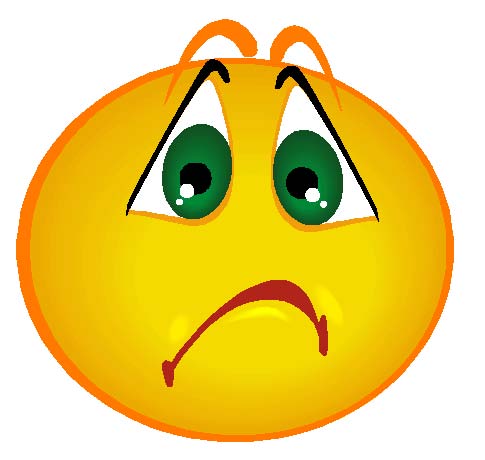Life
Cycles:
A Curriculum Plan and Teaching Guide
Curriculum Standard(s)
Rationale
General Educational Goals
Subject Matter Description
- Life Cycles of a butterfly, frog, plant, chicken, and person
- Details of each stage of development in the life cycle
- Metamorphosis
- Use of the Internet to support research
- Note Taking
- Teamwork
- Presentation skills
Learner Description
The activities in this Life Cycles web are designed for Second Grade students, ages 6 - 8 years old. Some younger, more motivated students or older students who have not mastered the life cycle standard may also use this site. The students will need to posses some computer skills such as clicking on links, closing windows, and navigating through several pages. This site contains materials that are read to the student as well as material that needs to be read independently. Students are asked to complete the site independently, however, students can be paired with each other based on reading level, technology knowledge, etc.
Prerequisites
- Read at least on a second grade level
- Be able to write complete sentences
- Use a web browser and navigate web pages
- Be able to work cooperatively in partners or groups of three
- Be motivated to help others and learn new concepts
Learning Objectives
- Describe the life cycle of a frog, butterfly, chicken, plant, and person
- Summarize each stage of the life cycles and what happens during that stage
- Compare and Contrast the life cycles of living organisms
- Create diagrams explaining the life cycles
Materials
- An Internet linked computer (1 for every 2 to 3 students)
- Design Software such as Power Point, MS Movie Maker, or ActivInspire
- Writing Journal
- Pencil
- Poster Board
- Creative Supplies (construction paper, markers, glue, pipe cleaners, pompoms, etc.)
- Links to Sites (embedded in the Curriculum Site)
- Eric Carle reading The Very Hungry Caterpillar - http://www.eric-carle.com/ec_reads_vhc.html
- The Very Hungry Caterpillar Video - www.youtube.com
- Slide show of the life cycle of a butterfly - http://ed101.bu.edu/StudentDoc/current/ED101sp10/brettw1/Butterfly%20Eggs.html
- Enchanted Learning Life Cycle - http://enchantedlearning.com/subjects/butterfly/lifecycle/index.shtml
- Butterfly and Frog Life Cycle Game - http://www.sheppardsoftware.com/scienceforkids/life_cycle/butterfly_lifecycle.htm
- Class Blog: http://brightbutterflyclass.blogspot.com/
- Harcourt Life Cycle of a Frog - http://www.harcourtschool.com/activity/science_up_close/212/deploy/interface.html
- Labeling the Life Cycle of a Frog - http://www.neok12.com/diagram/Metamorphosis-01.htm
- Chicken Life Cycle Diagram - http://gets.gc.k12.va.us/elementary/lifecycles/chicken_lifecycle.html
- Information on the Life Cycle of a Chicken - http://gets.gc.k12.va.us/elementary/lifecycles/chickens.htm<
- BrainpopJr. Plant Video - http://www.brainpopjr.com/science/plants/plantlifecycle/preview.weml#
- BrainpopJr. Sequencing - http://www.brainpopjr.com/science/plants/plantlifecycle/sequenceorder/
- Student Video on Human Life Cycle - http://www.youtube.com/watch?v=aObHfcuWqdM
- PowerPoint on Human Life Cycle - www.rbksch.org/resources/prim/ks2/science/Human-Lifecycle.ppt
- Rubrics created at http://rubistar.4teachers.org/
1. Create a Power Point about one of the five life cycles.
2. Write in your Travel Journal or log about the stages of life you go through written from the perspective of one of the five living things you have studied.
3. Create a Venn Diagram that compares of how the two out of the five life cycles discussed differ.
4. Go to the class blog spot and create an entry from the perspective of the one of the five living things as they go through metamorphosis.
5. Create a model of at least two of the life cycles discussed using materials provided in the classroom.
6. Write in your Journal and answer the essential questions of the curriculum web.
7. Produce a play that incorporates at least one of the life cycles.
8. Create a concept map using Inspiration that shows the life cycles and what happens during each stage.
This curriculum web is built for students to use in cooperative learning groups. The students need to be divided in to groups of two or three. I would suggest having these grouped by ability. Place an advanced, average, and lower level student together if making groups of three. If you are only using pairs then you may want to place an advanced student with a lower student or two middle students together. Each group will work together to complete the curriculum web. The final outcome of this curriculum web will include five small activites and one culminating activity.
The groups will each need their own computer, so if you are able to use the computer lab at your school you will need to reserve that for five to six days for about an hour each day. If you are unable to use a computer lab this curriculum web will take longer to work through because each group is expected to complete one activity a day and then the sixth day is the culminating activity.
The instructions for each activity in this curriculum web are found on the student activity pages of the website. You will want to be familiar with these pages so that you may answer any questions that come up during the work sessions. The students will use the resources located on each activity page to learn about that specific living organisms life cycle. After viewing webpages, vidoes, and interactive sites, the students are expected to complete an activity. The activities and culminating activity are as follows:
- Activity One: Complete a diagram of the life cycle of a butterfly. You may draw this on poster board or create it using ActivInspire on the computer.
- Activity Two: Go to the class blog spot and create a new entry. In this entry, you will pretend you are a frog. Explain to the reader what stages you go through and what happens to you at each stage as you grow.
- Activity Three: Use the materials found in the art area of the classroom to create a model of the life cycle of a chicken. Make sure to show what happens in each stage of the chicken's life.
- Activity Four: Use the program Inspiration to develop a concept map that shows the life cycle of a plant and what happens in each stage of the cycle.
- Activity Five: Create a Venn diagram that compares the life cycle of a human to the life cycle of one of the other four living things we have studied in this curriculum web.
- Culminating Activity: Choose one of the following to complete:
1. Create a Power Point Presentation that discusses the five life cycles. Make sure to include the stages and how they are alike and different.
2. Answer the Essential Questions found on the Introduction Page in your journal.
3. Produce a play that incorporates the life cycles you have studied.
Once all of the activities have been completed, have the groups share their culminating activity with the class. You may also want some of the groups to share one or two of their activities that preceeded the final product.
Assessment Plan
Each activity page includes a learning activity that the student must complete. Each learning activity has a rubric that will be used to evaluate the product. The rubric can be found at the end of each activity page. After completing the five activity pages the students chose which culminating activity they would like to complete. The culminating activities are assessed using rubrics or check-lists. These can also be found on the culminating activity page. Below you will find a sample of the rubrics used in the Life Cycles Curriculum Web.
3 points
|
2 points
|
1 point
|
|
| 4 stages of the life cycle labeled | All 4 stages are labeled | 2 or 3 stages are labeled | Only 1 stage is labeled |
| Gives information about each of the 4 stages of the life cycle | Information is provided about all 4 stages | Information is provided for at least 2 stages | Information is only provided for 1 stage |
| Each stage is illustrated | Illustrations for all 4 stages are provided | Illustrations for at least 2 stages were provided | Only 1 illustration was provided |
| Project is neat and organized | Project is well organized, easy to understand, and neat | Project is some what organized, easy to understand, and neat | Project is not organized, difficult to understand, and messy |
Evaluation Plan
Contact Information
Lisa Weaver
Sharp Creek Elementary School
115 Old Muse Road
Carrollton, Ga 30116
lisa.weaver@carrollcountyschools.com
Click here to view the Life Cycles Curriculum Web.
Bibliography
ALTEC. (2009). Rubistar. Retrieved from http://rubistar.4teachers.org/
blogger. (2011). Retrieved from http://www.blogger.com/home
BrainPop. (2011). Brain pop jr. science. Retrieved from http://www.brainpopjr.com/science/plants/plantlifecycle/preview.weml
Carle, E. (n.d.). The official eric carle website. Retrieved from http://www.eric-carle.com/home.html
Col, J., & Mitchell, S. (2010). Enchanted learning. Retrieved from http://www.enchantedlearning.com/Home.html
Cunningham, C. A., & Billingsley, M. (2006). Curriculum webs: weaving the web into teaching and learning. Boston, MA: Pearson/Allyn and Bacon.
Houghton mifflin harcourt school publishers. (2011). Retrieved from http://www.harcourtschool.com/index.html
KingsNet. (2010). Human life cycle power point. Retrieved from www.rbksch.org/resources/prim/ks2/science/Human-Lifecycle.ppt
Miller, S. (n.d.). Life cycles. Retrieved from http://gets.gc.k12.va.us/elementary/lifecycles
NeoK12, . (2011). Label the frog lifecycle. Retrieved from http://www.neok12.com/diagram/Metamorphosis-01.htm
Sheppard Jr , B., Donahue, J., & Lombardi, N. (n.d.). Sheppard software. Retrieved from http://www.sheppardsoftware.com/
Weinstein, B. (n.d.). The amazing lifecycle!. Retrieved from http://ed101.bu.edu/StudentDoc/current/ED101sp10/brettw1/Index.html
Youtube. (2011). Retrieved from http://www.youtube.com


